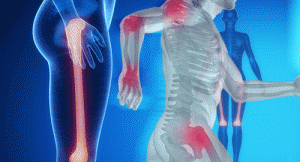 Several studies have suggested that antioxidants, such as N-acetyl cysteine (NAC) and procyanids, are able to attenuate the development of instability-induced osteoarthritis (OA) in mice. Moreover, vitamin C has been shown to promote the synthesis of type II collagen and aggrecan in cartilage explants from guinea pigs. These results have led investigators to suggest that vitamin C might have beneficial effects on cartilage degeneration.
Several studies have suggested that antioxidants, such as N-acetyl cysteine (NAC) and procyanids, are able to attenuate the development of instability-induced osteoarthritis (OA) in mice. Moreover, vitamin C has been shown to promote the synthesis of type II collagen and aggrecan in cartilage explants from guinea pigs. These results have led investigators to suggest that vitamin C might have beneficial effects on cartilage degeneration.
Masato Koike, MD, PhD, professor and chairman of the Department of Cell Biology and Neuroscience in the Juntendo University Graduate School of Medicine in Tokyo, Japan, and colleagues published the results of their mouse study in Scientific Reports online on June 25.1 They found that mitochondrial superoxide appears to play a pivotal role in the development and progression of osteoarthritis. They began their research with normal 20-week-old, C57BL/6 mice and performed surgical destabilization of the medial meniscus (DMM). This procedure induced abnormal loading in the chondrocytes of the knee cartilage. The investigators then evaluated the gene expression of several superoxide-degrading enzyme genes (Sod1, Sod2 and Sod3).
“We discovered that abnormal loading significantly elevated mitochondrial superoxide generation and down-regulated the Sod2 expression in wild-type chondrocytes from the DMM side compared with the sham side before the appearance of obvious cartilage degeneration in vivo, suggesting a negative correlation between the mitochondrial superoxide leak and Sod2 decline,” wrote the researchers.
Paraquat (PQ) is a mitochondrial superoxide inducer at I26. The investigators treated the mice with PQ and were able to induce mitochondrial superoxide generation at complex I26 and significantly suppress Sod2 expression in wild-type chondrocytes from the DMM side when compared to chondrocytes from the sham side. The suppression occurred even prior to obvious cartilage degeneration in vivo.
“We have, for the first time, demonstrated that SOD2 loss in chondrocytes accelerated cartilage degeneration during aging and under an instability murine model,” emphasized the authors in their discussion.
They then investigated the expression of OA-related genes in PQ-treated mice. The results suggested that PQ treatment suppressed the gene expression of antioxidant enzymes, including Sod2. This then resulted in impaired extracellular matrix (ECM) metabolism.
To further investigate the OA phenotypes of cartilage and chondrocytes, the investigators created chondrocyte-specific, Sod2-deficient mice that had mitochondrial superoxide overproduction and dysfunction. They examined Sod2 loss in chondrocytes-accelerated cartilage degeneration during aging and found that the Sod2-deficient mice did have accelerated cartilage degeneration relative to control littermates.
“We selected a stable, permeable and less toxic vitamin C derivative to suppress mitochondrial superoxide generation in chondrocytes in vivo,” explained the authors. When the investigators injected the permeable antioxidant L-ascorbyl 2-phosphate 6-palmitate (APPS) into the intra-articular space, they were able to effectively suppress mechanical-loading-induced mitochondrial superoxide generation, as well as cartilage degeneration in the mice. The authors concluded their paper by suggesting that mitochondrial superoxide balance may be a promising therapeutic target for cartilage degeneration. They also propose further investigation into the effects of an intra-articular injection of a vitamin C derivative to reduce cartilage degeneration.
